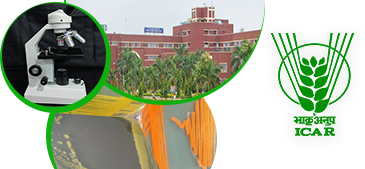Navigation
MGRR
Microbes constitute the largest biomass on the earth and comprise of three domains of life bacteria, archaea and eukaryotes. Almost 90 % of this diversity is still unexplored and most of them are unculturable also. These microbes play an integral and unique role in the functioning of the ecosystems in maintaining a sustainable biosphere and productivity. They are responsible for nutrient recycling and detoxification. They act as biological control agents, biocatalysts and produce a wide variety of products that have pharmaceutical, industrial and agricultural applications. They are also thought to be solutions for the food and energy crisis that the world may face in future.
Plant associated microbes have tremendous potential to improve plant resilience and yields in farming systems. There are increasing evidences of biological technologies that use microbes or their metabolites which can enhance nutrient uptake and yield, control pests and mitigate plant stress responses. Emerging efforts exploring microbiome engineering could lead to microbial consortia that are better suited to support plants. The combination of biotechnological approaches could be integrated to achieve maximum benefits and significantly improved crop yields to address food security in the country like India.
Institutes in the Indian National Agricultural Research System (NARS) and elsewhere in the country have been carrying out recombinant DNA research since a decade. It is routine to keep vectors, gene/promoter constructs even after a particular research project has been finished, because they constitute a valuable reserve for research and are a way to continue capitalizing on the investment (time and funds) already made to generate knowledge or products. In addition to the sequence information, projects associated with whole genome analysis generally produce biological materials such as cDNA clones, RFLP markers on the genetic map, cosmid clones, PAC (P1 derived Artificial Chromosome) clones, BAC (Bacterial Artificial Chromosome) clones, YAC (Yeast Artificial Chromosome) clones etc. These genome resources are indispensable tools for future post-genomic research, such as physiological and morphological characterization of a species, functional analysis of genes, comparative genomics and plant and animal breeding. Therefore, it is necessary to maintain an efficient system for conservation and management of DNA materials.
Therefore, to mine and decipher the plethora of potential gene pool available with these microorganisms and its conservation in suitable vectors/clones, the Bureau has established Microbial Genomic Resource repository and will play a vital role in bioscience research and education. The key objectives of MGRR are:
- Nation wide survey and Collection of information about Microbial Genetic Resources
- Characterization, validation and molecular typification of reference microbial cultures, and generation of molecular dataset and generation of barcode as reference.
- Exploration for collection of environmental microbial samples from different agroclimatic regions and direct DNA isolation through metagenomic approaches
- Collection of DNA materials from microorganisms and other relevant organisms which result from the various molecular genetics and genomics research programmes.
- Acquisition of gene constructs from various sources.

